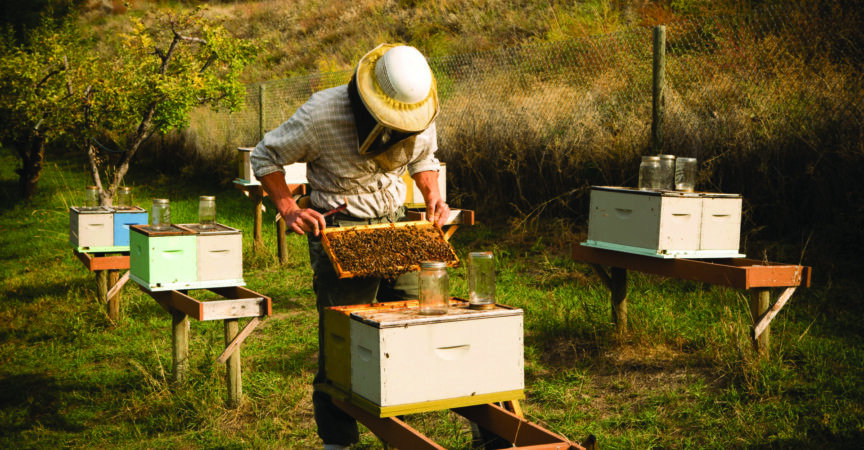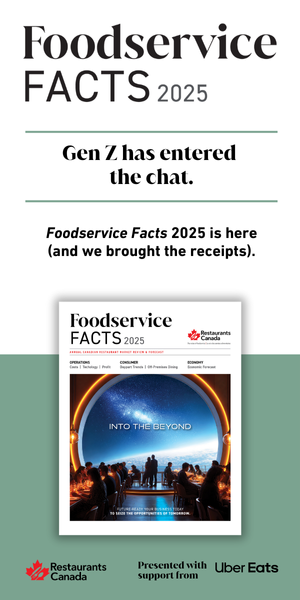Conscious Sourcing
Insights on Building a More Resilient and Sustainable Food System with Rebecca Mackenzie, President and CEO of the Culinary Tourism Alliance
Canada’s food system is often touted as one of the most robust in the world, a vast network of farms, fisheries and artisans producing ingredients of exceptional quality under some of the strictest safety and sustainability regulations anywhere. Yet, for all its strengths, it remains vulnerable. Global supply chains are increasingly volatile, climate change is shifting growing seasons and disrupting harvests, and trade disputes threaten access to key markets and ingredients. In a moment where food security and sovereignty have become pressing national concerns, the question is no longer just whether Canada can feed itself—but how well it can sustain a food system that is resilient, equitable and distinctly its own.
For Rebecca Mackenzie, President and CEO of the Culinary Tourism Alliance (CTA), the answer lies in deepening Canada’s relationship with its own food sources. For nearly two decades as a highly visible and knowledgeable advocate for local food and taste of place, she has championed a movement that positions local food not as a luxury or a trend but as an essential pillar of national identity. She has made great strides in helping bridge the gap between farmers, chefs and restaurateurs to ensure that Canadian ingredients are celebrated, savoured and woven into the stories that define Canada’s culinary identity at home and abroad.
Founded in 2006 as the Ontario Culinary Tourism Alliance, the CTA successfully implemented a decade-long culinary tourism strategy before evolving into a national organization in 2016. Expanding its mandate to collaborate with destination marketing organizations, economic development agencies, and foodservice operators across Canada, the CTA has played a pivotal role in strengthening local food economies. The pandemic prompted a strategic recalibration, leading to initiatives like the Great Taste of Ontario, which later expanded into the Great Taste of Canada in 2023. As the CTA continues to amplify local food stories and foster culinary tourism, its “Big Hairy Audacious Goal” remains clear: to establish Canada as a globally recognized “delicious destination” by 2030.

A Shift Towards Local Food and Stronger Connections
Over the past decade, local food in Canada has evolved from a culinary passion to a mainstream movement, shaped by changing policies, agricultural innovations, and shifting social values. Trade tensions with the U.S. have heightened public interest, while the pandemic accelerated existing trends toward transparency and sustainability. “We’ve seen a significant change,” Mackenzie says. “The demand for local has been growing, especially post-pandemic, as more people want to know where their food comes from. Consumers, particularly younger generations, value sustainable practices and want to make choices that support local economies.”
Yet, enthusiasm alone does not create a resilient food system—education and structural change are equally critical. Mackenzie notes a persistent disconnect between the foodservice industry and local producers. “There’s still an enormous amount of education that needs to happen within the foodservice sector to help operators understand how they can support local 365 days a year—not just in peak season,” she explains. “Canada produces incredible ingredients all year long, and it depends on how much an operator is willing to invest in relationships rather than just checking a box with a distributor.”
One longstanding challenge has been balancing convenience with commitment to local sourcing. Broadline distributors offer efficiency and consistency but may not always prioritize local options. “For many restaurants, it’s simpler to place an order and receive everything from a single supplier rather than coordinate directly with multiple farmers and adjust menus seasonally,” Mackenzie acknowledges. “But those who make the effort—who truly integrate local food beyond a marketing slogan—often build stronger customer loyalty and more resilient supply chains.” With increased demand, distributors are adapting, expanding their Canadian offerings to support operators who want to strengthen local ties.
Mackenzie sees an opportunity for more restaurants to embed local sourcing into their business models—not just to enhance their menus, but to create a compelling narrative. “When restaurants lean into their local food story, share their relationships with producers, and make that a visible part of their brand—that’s when they create a connection that consumers truly value,” she says. “We need more of that storytelling.”

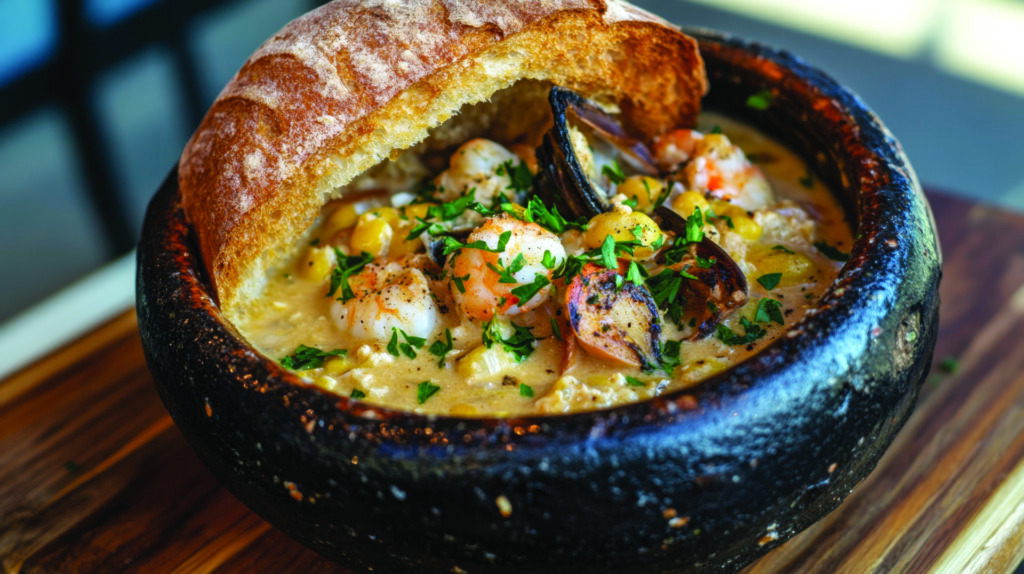
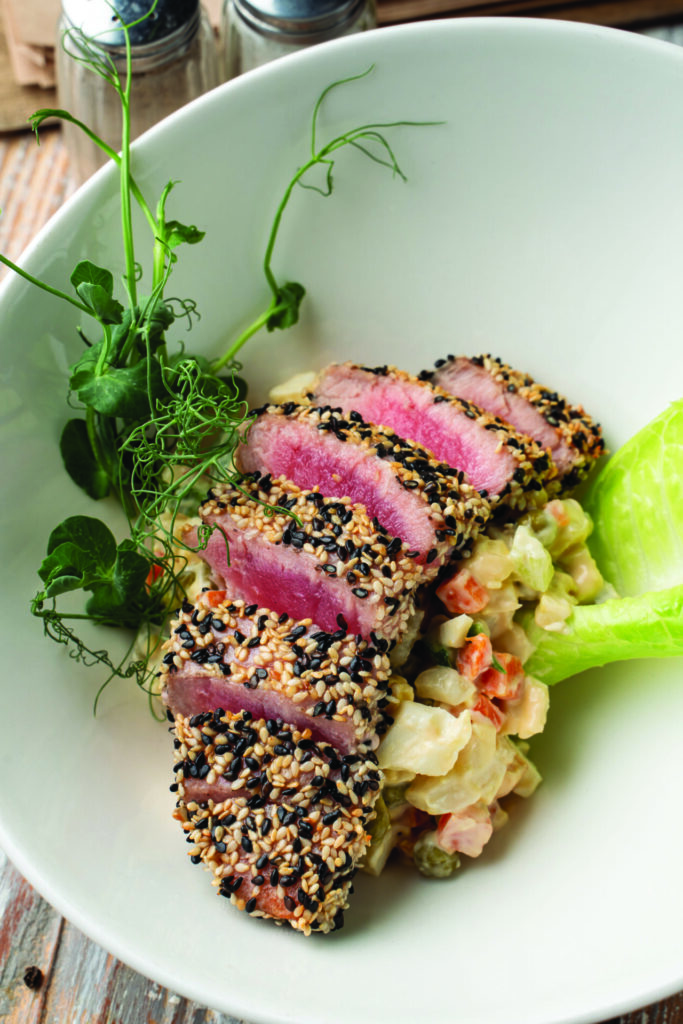
Overcoming Challenges: Sourcing Local Year-Round
Mackenzie challenges the persistent misconception that local food is inherently seasonal, and that fully integrating local sourcing is only viable in the height of summer, emphasizing that Canada’s agricultural landscape yields high-quality ingredients throughout the year, from root vegetables and pulses to dairy, grains, and proteins. More correctly, she identifies infrastructure and logistics as the gremlins in the system.
Small-scale farmers and agri-food companies often struggle with distribution, making it difficult for restaurants to access local products easily and reliably. Mackenzie notes that this gap is being addressed by a growing network of national and local Destination Marketing Organizations (DMOs) and economic development agencies that are working to foster direct connections between farmers and chefs and investing in infrastructure to make local sourcing viable. “It’s happening,” Mackenzie asserts, “and it’s making a difference.” She points to initiatives like Ontario’s Feast On certification, which helps restaurants and foodservice operators commit to sourcing a significant portion of their ingredients from local producers, as a model for strengthening regional food economies. By providing businesses with a recognizable certification that signals their commitment to local sourcing, Feast On not only incentivizes restaurants to engage with nearby farmers and food producers but also educates consumers about the impact of their dining choices.
She also highlights the role of regional food hubs, which act as intermediaries connecting small- and mid-sized farms with restaurants, retailers and institutions that might otherwise struggle to access local products at scale. These hubs help to streamline distribution, reducing the logistical challenges that often deter operators from committing to local sourcing. “When restaurants have easier access to quality local ingredients, they’re far more likely to incorporate them into their menus in a meaningful way,” Mackenzie
explains.
The proliferation of these programs signals a growing shift towards a more integrated and resilient food system, where local products are not only available but also actively supported through infrastructure and policy changes designed to make regional sourcing the practical, sustainable choice. Ultimately, Mackenzie sees local sourcing as a long-term investment. “It’s not just about the here and now—it’s about creating a food system that supports our producers and our communities for generations to come.”
The Business Case for Local: It’s More Than Just a Feel-Good Choice
The benefits of sourcing local go beyond ethics and sustainability; they also provide a strategic advantage in a challenging industry. For Mackenzie, the case for local food is not just about doing the right thing—it’s about long-term business viability. “Restaurants that develop deep relationships with their suppliers were far more resilient during the pandemic,” she points out. “When supply chains were disrupted, those with direct relationships could pivot more easily.”
She also challenges the assumption that local food is significantly more expensive, arguing that cost efficiency often comes down to operational choices. “It’s not necessarily the case that local ingredients cost more—it’s often about whether a restaurant is set up to use them efficiently,” she explains. While a conscious commitment to local food may require greater menu adaptability and staff training, it offers an often-undervalued opportunity for differentiation. “Yes, labour costs can be a factor, but when you engage consumers by telling the story of where their food comes from, it adds value beyond just price. People want to feel good about where they’re spending their money, and when they know their meal supports local farmers, fishers and artisans, they’re more likely to come back.”
This storytelling component is where local sourcing truly shines. Restaurants that integrate local food not only benefit from fresher, higher-quality ingredients but also build a distinct identity that resonates with customers. “As consumers continue to seek meaningful dining experiences, restaurants that embrace local sourcing have a competitive edge—not just in quality, but in loyalty. And, if you create something that locals love, it becomes a must-visit for visitors, too,” Mackenzie notes. “Your local audience is your bread and butter; your tourists are the gravy.”
A well-informed server who understands the provenance of the food they’re serving can provide an experience that’s memorable and meaningful, and that storytelling makes a real impact.
The Role of Restaurants in Strengthening Canada’s Food Resilience
Restaurants are more than just places to eat; they are educators, storytellers, and ambassadors of taste of place. As Mackenzie points out, they are also the proximal link between producers and consumers, shaping public perception of local ingredients and reinforcing Canada’s food and culinary identity.
Beyond influencing individual diners, restaurants play a crucial role in generating demand for local products on a larger scale. “If restaurants showcase local food and drink on their menus—whether it’s Nova Scotia lobster, Alberta beef, Quebec maple syrup, or BC shellfish—they help shape Canada’s culinary identity and ensure these industries thrive.” Mackenzie explains, emphasizing the importance of equipping staff with the knowledge to share the stories behind the ingredients on the menu. “A well-informed server who understands the provenance of the food they’re serving can provide an experience that’s memorable and meaningful, and that storytelling makes a real impact. By making local sourcing an integral part of their offerings, restaurants reinforce the value of these products and contribute to the stability of local food systems.”
She encourages operators who may be unsure where to begin to start small. “Even if a restaurant isn’t entirely local, it can take steps—like integrating seasonal ingredients, highlighting local wines and craft beers, or participating in regional food trails. It’s not about being all or nothing; it’s about progress.” These incremental changes not only strengthen relationships with local producers but also help build consumer awareness, fostering a deeper appreciation for Canada’s diverse and abundant food landscape.
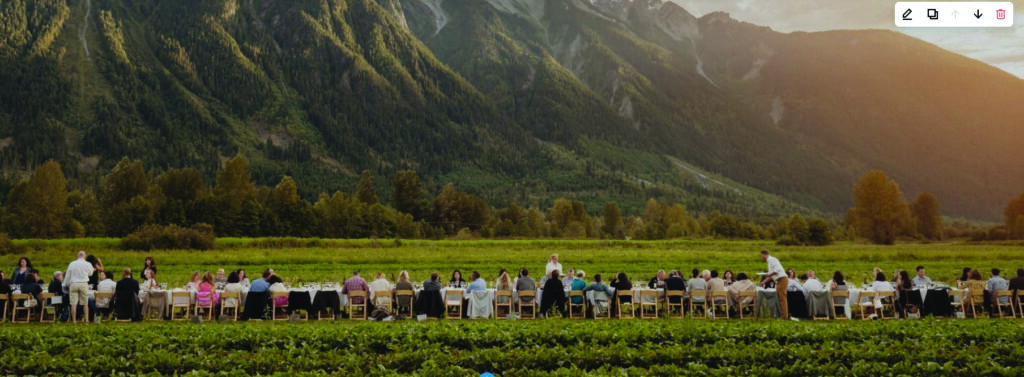
A Call for Collaboration and the Path Forward
Mackenzie sees connection and collaboration as the foundation of a resilient food system. She points to the success of initiatives like Ontario’s Feast On certification program and BC’s Chef’s Table Society, which have strengthened relationships between chefs and farmers, creating direct pathways for local sourcing. She also sees promise in evolving interprovincial trade policies, which could unlock greater access to Canadian products nationwide. “There’s an exciting time ahead as we work to reduce internal trade barriers,” she says. “This could mean greater access to incredible Canadian products from coast to coast to coast.”
But for Mackenzie, supporting local food goes beyond economics—it’s about securing Canada’s food future. “If we don’t support our local producers, we risk losing them. It’s not just about doing what’s best for business; it’s about doing what’s best for people and the planet.”
Every dollar spent on local food is an investment in the strength of communities, the sustainability of the environment, and the identity of the nation. By embracing the rich diversity of Canada’s culinary landscape, we don’t just address food insecurity and enrich our own experiences—we help define Canada as a world-class food destination, which it absolutely is.
About Rebecca Mackenzie
Rebecca Mackenzie, President and CEO of the Culinary Tourism Alliance, is a culinary tourism maven with a boundless appetite for food, culture and adventure. Rebecca holds a master’s degree in Global Leadership from Royal Roads University and boasts over 25 years of experience in culinary and agritourism. Rebecca is also a published author and professor, and has written curriculum for several post-secondary institutions. She generously contributes her expertise as a volunteer on various destination marketing and tourism boards. Her career has been a thrilling journey, from working with renowned culinary destinations to crafting unforgettable foodie experiences that tantalize travellers’ taste buds.
Follow @tasteofplacechampion
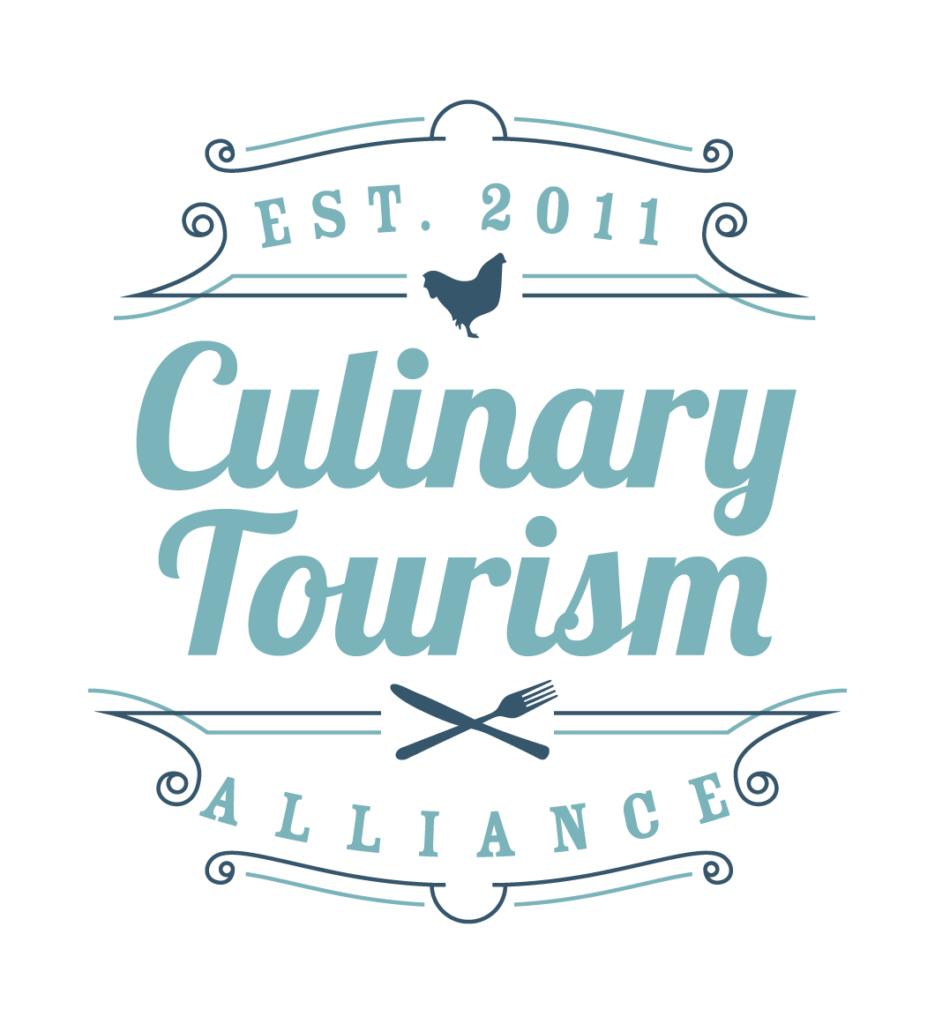
About The Culinary Tourism Alliance
The Culinary Tourism Alliance is a non-profit committed to connecting tastemakers across Canada and around the world to spark delicious developments in culinary tourism. With an established expertise in culinary tourism development, the Culinary Tourism Alliance seeks to ensure that authentic tastes of place become a significant economic driver for communities and regions, and a primary way for travellers to enrich their experience. To learn more, follow @CulinaryTourismAlliance on Instagram or visit www.culinarytourismalliance.com.
Are you doing something delicious? Reach out to the Culinary Tourism Alliance:
IG : @culinarytourismalliance | canadaculinary.com | ontarioculinary.com



